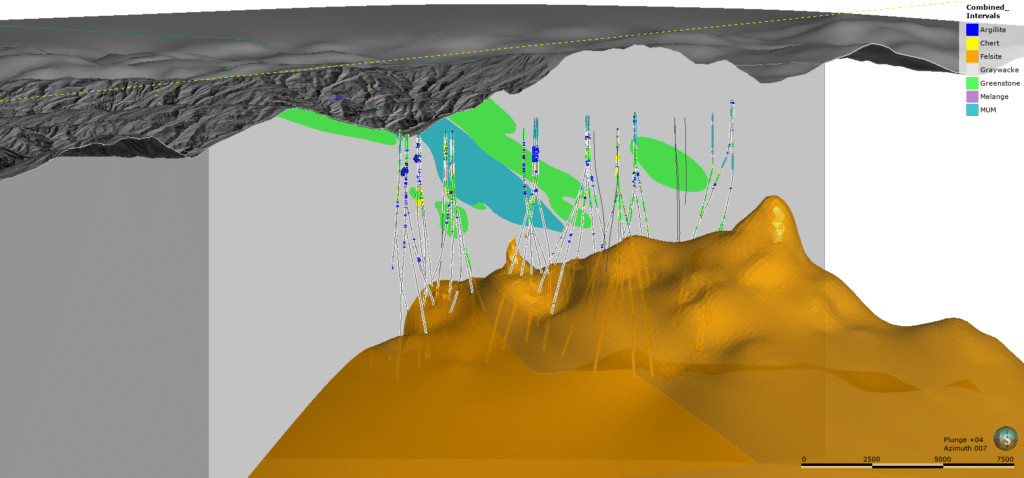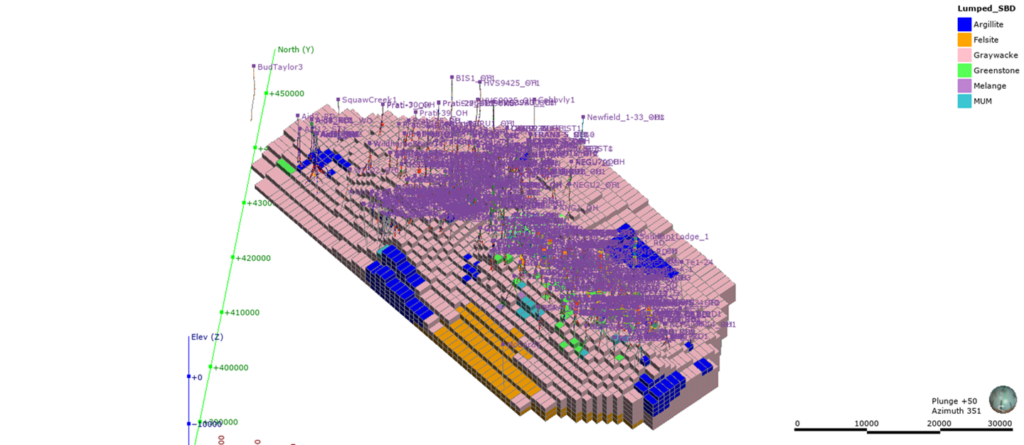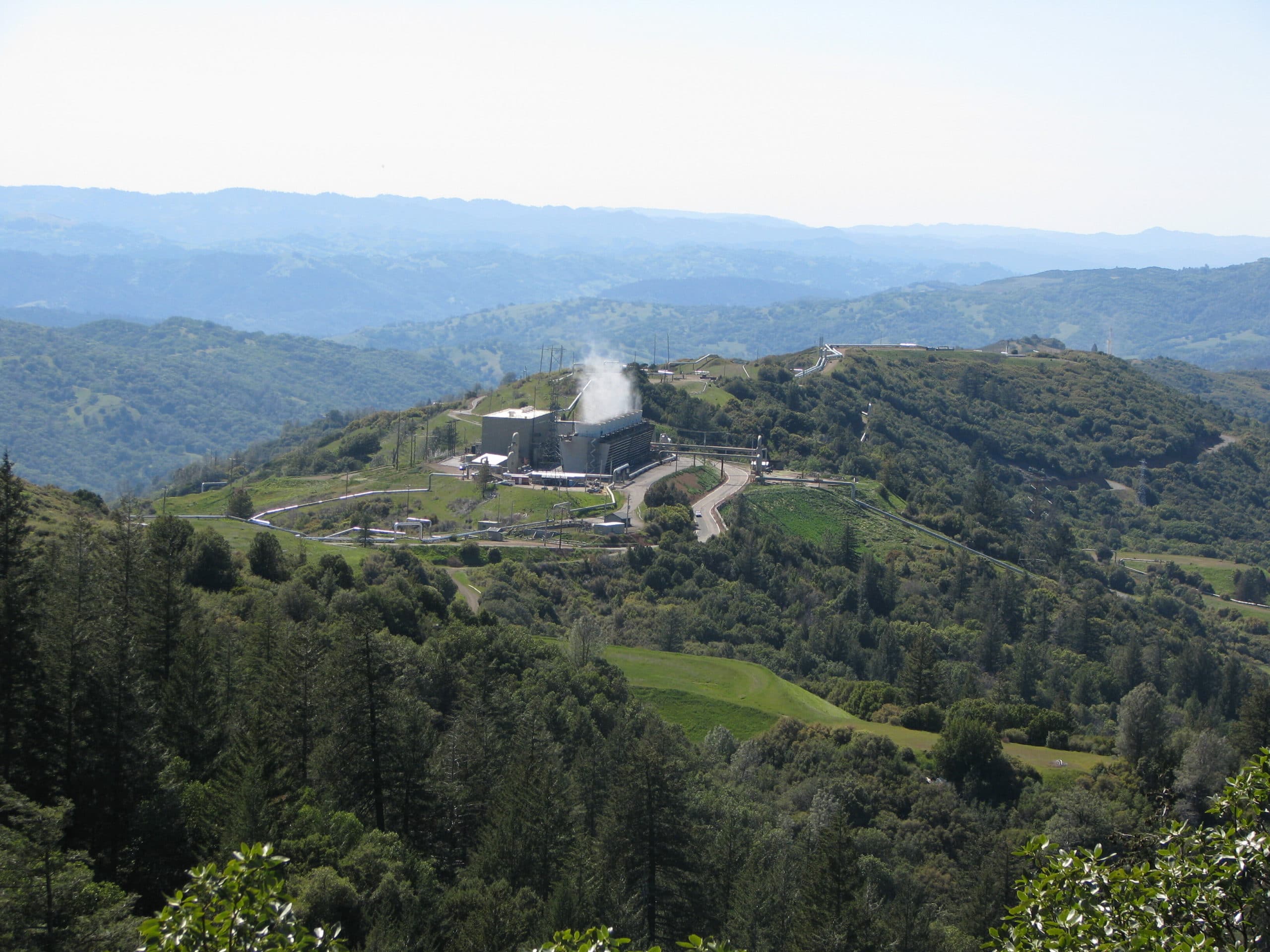30 Olympic swimming pools worth of reclaimed water rush into the Mayacama mountains outside San Francisco every day. The electricity it helps generate could power the city.
Here, the Geysers geothermal energy plant provides power to most of Northern California beyond the Golden Gate Bridge. 13 power plants generate over 725 megawatts of energy, enough to supply 725,000 homes.
It’s the largest geothermal power plant in the world, but that’s not the only reason it’s impressive.
“It’s different in terms of the resource itself. The majority of geothermal projects are liquid dominated geothermal reservoirs. The Geysers is one of the few that is superheated steam,” says Julio Garcia, director of geothermal production analysis at Calpine Corporation.
“The conversion of steam to electric power is more efficient.”
Calpine operates around 90% of the power plants in The Geysers region.
Geothermal energy is not only renewable, but reliable. Unlike solar or wind power, geothermal reservoirs generate consistent power nearly 100% of the time.
The only challenge at The Geysers is if they run out of steam.
Recharging the reservoirs
Unlike many sites, The Geysers are a dry steam resource. There’s no liquid water. Superheated steam held inside hot permeable rocks evaporates into the air once it’s converted to electricity by turbines.
Unlike water, it’s nearly impossible to trap all of steam to reinject it into the system.
This creates a problem: although the hot rock remains, the small amount of fluid within it declines. Without steam to drive the turbines, no energy can be produced.
“One of the critical challenges that every geothermal operator faces is decline, either decline of the mass of fluid that is being produced or a decline in temperature in the fields,” explains Julio.
The Geysers power plants developed rapidly from the early 1970s to the 1980s, so the system began using up its steam quickly. By the late 1990s when Calpine consolidated most of the site, they had to find a creative and sustainable way to feed more water into the hot rocks.

“We bring more fluid into the system by injecting water to use the heat and then boil that water and produce more steam,” Julio says.
“Two projects were established to bring wastewater from two portions of the state: from the north Lake County and from the south city of Santa Rosa.”
To confront this challenge, Calpine created the first wastewater-to-steam power project in the world. The Geyser’s hot rocks are injected with reclaimed wastewater to fuel the turbines with steam.
Power for the public
Calpine recently became a private company. Projecting their future power output accurately and consistently is now highly important for stakeholder reports.
Maintaining and reporting flat, consistent electricity generation today as well as communicating the potential of future projects is essential.
“How do we optimize injection and how do we redistribute the water in a way that we can get the most injection-derived steam from the water that is being injected?” Asks Julio.
After nearly 50 years of production, The Geysers already had several geological models, historical cross sections, geological data, drill data, and geologists’ and geophysicists’ interpretations.

Calpine’s new team needed a way to build accurate, modern reservoir models and plan future wells while getting the most from the site’s historic information.
“The opportunity with Leapfrog has just been to put all the data in one place and look at it and use the tools from Leapfrog to see what sort of 3D geologic model can be assembled, the old cross sections are just an example of a way that we can kind of visually check our new modeling new geologic modeling against previous understanding of what the subsurface geology was.” explains Julio.
Breaking ground for clean energy
Using a new model that brings all their data together, Julio’s team is working to optimise their current wells and injection sites – while planning new developments to increase their overall output.
While geothermal wells are rarely more than two kilometres deep, The Geysers include one that’s nearly double – at 3.9 kilometres. Yet, in the Northwest of the site lays an area that’s even deeper and hotter, waiting to be developed.
It’s a new frontier for their team and geothermal energy.
“How we can optimize the best way to mine the heat of the reservoir and then the best way to use that steam power plant. Those are interesting challenges.”
While steam rises from these hills, residents of Northern California have a consistent source of clean energy.





